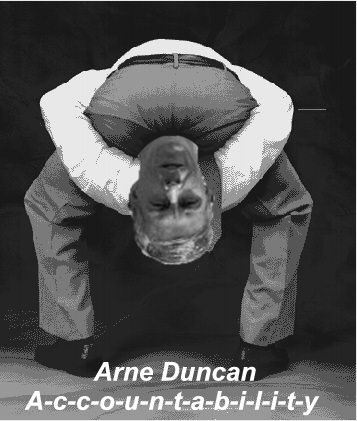Pearson’s Quest to Cover the Planet in Company-Run Schools | WIRED:
Pearson’s Quest to Cover the Planet in Company-Run Schools
For decades, the major landmark of Balut, Tondo, a densely populated slum squeezed against Manila’s North Harbor, was a monumental pile of often-smoldering trash nicknamed Smokey Mountain. “It used to be sort of pretty, actually,” says Nellie Cruz, a lifelong resident. She points to the spot, now bulldozed, across a reeking, garbage-strewn canal from where we stand with her 13-year-old son, Aki.
The scene is humble, yes, but Nellie, a single mother, isn’t destitute or desperate. She’s a modern, upwardly mobile megacity dweller, the kind you’re equally likely to meet in Shanghai or São Paulo, except with better English skills—the legacy of the Philippines’ history as a US colony and one key to its current economic growth.
Both Nellie and Aki carry iPhones, for example, though the devices were given to them by Nellie’s sister, a nurse, who lives in the San Francisco Bay Area. The Cruzes’ immaculate, doll-size family compound has a caged rooster in the front yard, Christian inspirational wall decals, and a strong Wi-Fi signal. In contrast to the screen-time panic among US parents, Nellie is OK with her only child spending time in his attic bedroom, gaming and browsing science pages on Facebook, rather than out on the street exposed to the pounding sun, the omnipresent filth, and the drug gangs on the corner.
The same protective but ambitious impulses were at work when it came to choosing a school for Aki. He attended Catholic institutions when he was younger. Then Nellie lost her job in marketing. So for sixth grade, Aki went off to public school.
“There were 58 students in one classroom,” he tells me. “Only some of us, the Section 1s”—top performers—“got to sit in the classroom. The others studied in the corridor.” Nellie didn’t like her quiet, polite child having to mix it up with kids “from all walks of life,” as she puts it.
So for seventh grade they found a new option at the other end of the street from the public school, housed in a former umbrella factory. The sign outside reads “APEC Schools: Affordable World Class Education From Ayala and Pearson.”
APEC isn’t just new to Tondo or Manila. It’s a different kind of school altogether: one that’s part of a for-profit chain and relatively low-cost at $2 a day, what you might pay for a monthly smartphone bill here. The chain is a fast-growing joint venture between Ayala, one of the Philippines’ biggest conglomerates, and Pearson, the largest education company in the world.
In the US, Pearson is best known as a major crafter of the Common Core tests used in many states. It also markets learning software, powers online college programs, and runs computer-based exams like the GMAT and the GED. In fact, Nellie already knew the name Pearson from the tests and prep her sister took to get into nursing school.
But the company has its eye on much, much more. Investment firm GSV Advisors recently estimated the annual global outlay on education at $5.5 trillion and growing rapidly. Let that number sink in for a second—it’s a doozy. The figure is nearly on par with the global health care industry, but there is no Big Pharma yet in education. Most of that money circulates within government bureaucracies.
Pearson would like to become education’s first major conglomerate, serving as the largest private provider of standardized tests, software, materials, and now the schools themselves.
To this end, the company is testing academic, financial, and technological models for fully privatized education on the world’s poor. It’s pursuing this strategy through a venture called the Pearson Affordable Learning Fund. Pearson allocated the fund an initial $15 million in 2012 and another $50 million in January 2015. Students in developing countries vastly outnumber those in wealthy nations, constituting a larger market for the company than students in the West. Here in the US, Pearson pursues its privatization agenda through charter schools that are run for profit but funded by taxpayers. It’s hard to imagine the company won’t apply what it learns from its global experiments as it continues to expand its offerings stateside.
The low-cost schools in the Philippines are one of Pearson’s 11 equity investments in programs across Asia and Africa serving more than 360,000 students. Two of the most prominent, the Omega Schools in Ghana and Bridge International Academies based in Kenya, have hundreds of campuses charging as little as $6 a month. They locate in cheaply rented spaces, hire younger, less-experienced teachers, and train and pay them less than instructors at government-run schools. The company argues that by using a curriculum reflecting its expertise, plus digital technology—computers, tablets, software—it can deliver a more standardized, higher-quality education at a lower cost per student. All Pearson-backed schools agree to test students frequently and use software and analytics to track outcomes.
Not every Pearson-backed chain will succeed, but the
Pearson’s Quest to Cover the Planet in Company-Run Schools | WIRED:













